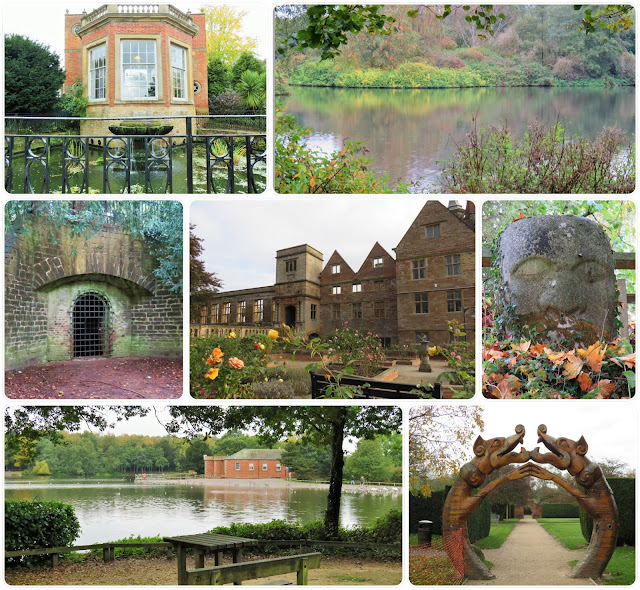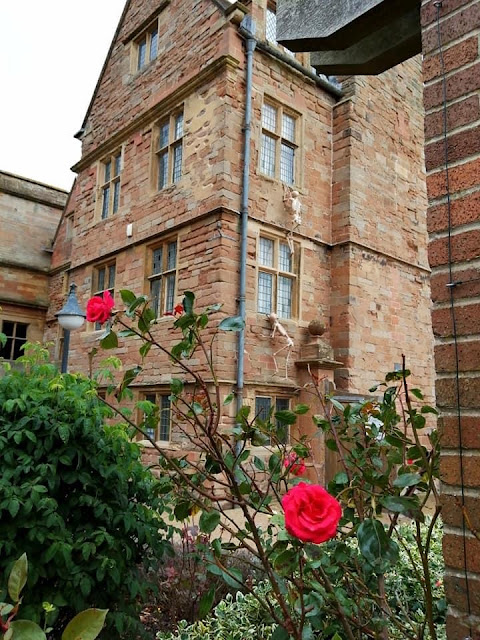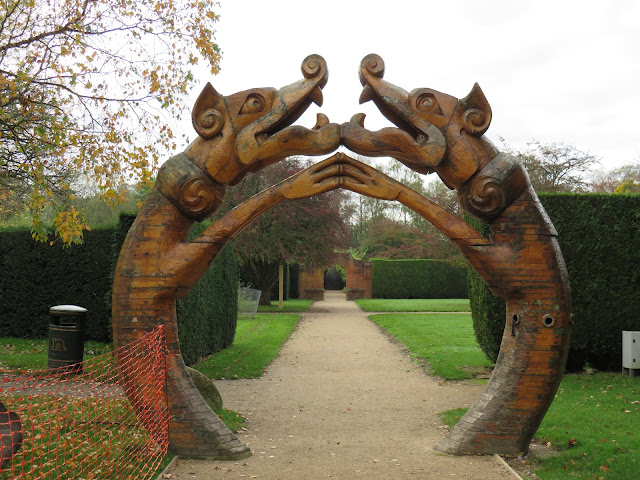Rufford Abbey and Park
Rufford Abbey is a country estate in Rufford, Nottinghamshire – originally part of the infamous Sherwood Forest, originally built as early as the 12th century. The name Rufford is from Old English meaning “rough ford” – although this is probably isn’t the ford – near the Mill (but was a stream which was dammed to make the Lake).
The first recorded owner of Rugforde or Rumforde, according to the Domesday Book, was a Saxon Chief called "Ulf, son of Suertebrand" but when the Normans invaded, King William the Conqueror gave Ulf’s estate to his nephew, Gilbert de Gant. In 1147 it was a Cistercian abbey but converted to a country house in the 16th century after the Dissolution of the Monasteries (when it gained a reputation of being haunted by a giant monk carrying a skull).
The Estate passed through various renowned families such as the Talbots (Earl’s of Shrewsbury), and Saviles (including Marquis of Halifax). In 1679 a new north wing on the site of the abbey church was constructed, containing reception rooms and a long gallery. A large stable block to the right of the house was also built. Further improvements were made between then and the 1900s, including the addition of the bath house, water tower, coach house, a brewhouse, 5 ice houses and the creation of the lake and mill buildings.

But in the early 1900s, the Estate had begun a slow decline and over the next 50 years, its trustees sold parts of the estate off to various people. In 1952 Nottingham County Council bought the abbey and 150 acres of park land and a few years later it was opened to the public. Part of the house, which is now Grade I listed as an Ancient Monument, was demolished in the 20th century, but its remains, stand in 150 acres of delightful park and woodland, and are open to the public free of charge.
There are 2 places to park, on opposite sides of the Estate (both chargeable), the main entrance off the A614 and the other by the Mill at the farthest end of the Estate. Either are ideal places to start your visit. The Main entrance brings you immediately to the Abbey – which although it is described as a ruin – it is still an impressive sight.
Surrounded by a rose garden to the front, a large grassy area to one side which leads onto the lake – and the old stable block on the last side.
The 17th century brick built stables were lad out around a central courtyard, which is where you will now find the visitor centre, a few small shops and the Coach House Café in – which has seating both indoors and out. At the back of the Abbey there is also the delightful Lord Savile’s Kitchen – a restaurant selling delicious wholesome meals.
There is also a small café in a small courtyard at the farthest end of the Lake, by the Mill and Ford. There was a three-storey corn mill built in 1750 which later became a two-storey building before being converted into a sawmill in 1860. This Old Sawmill building, which houses the Talbot Suite, is now a lavish venue for Weddings. This historical listed building, with its modern interior is an ideal place for that special occasion.
Behind this building you will see the Folly Bridge - the water comes from the Lake.
There are always plenty of birds, in particular Canadian Geese. It is a very safe place for little ones to feed the birds here.
The walk around the lake is delightful, whatever time of year you go. The paths are all accessible for everyone, whether it is a pushchair or mobility scooter.
Look out - You never know what might join you!
Rufford Lake was created in 1750 by the damming of Rainworth Water; and at the southern end there are 2 decorative islands which are linked by a tunnel bridge.
There are some great colours to be appreciated especially in the autumn.
A lake-side walk was created in 1991, with seating and picnic areas all around the edge the water. The lake is only 400 meters in length - so it doesn't take too long to walk around.
As well as the Formal gardens, there are the pleasure grounds to the north and of the Abbey gardens - which are made up almost entirely of woodland. Here you will find the Queen Mother's Walk and the Broad Ride which extends north from the Lawn which were originally created in the early 18th century but were replanted after the Second World War.
There are always unusual things to look out for in the woods - some permanent features and others put out at specific times of the year - such as Halloween.
The Formal gardens are also a delight to explore - as you will see below :-
There are so many interesting, quirky sculptures etc around each corner ...........................
This modern sculpture was created by young people with learning difficulties, their carers and a local blacksmith and is called the Hand.
The Herb Garden is a lovely place to spend a few minutes - any time of the year.
Adjacent to the herb garden is an arched wooden pergola walk between two hedges which leads to the Long Avenue - which is ablaze with colour in the autumn - and full of its own surprises.
The Grade 2 listed Orangery also known as the Summer House started life as a cold bath and summerhouse. It has brick walls on three sides with, at the south-east end, twin towers joined by a three-bay Tuscan loggia topped with balustrading. The orangery building has a bay window that overlooks the oval pond and lamp fountain. The bathhouse was converted into an orangery in 1889, with a glazed roof and a boiler, to keep the first Baron Savile's exotic plants and his collection of sculpture. The building was used as an ammunition store during the Second World War and renovated in 1995; it is often used as an exhibition area but the last time I went, the area around it was a Garden Centre selling plants.

Although Rufford Abbey once had five ice houses which were built in the 1800s, but only two remain today. They were built near the lake Rufford lake, (created about 1750). Several of these have doors that faced the lake (rather than the North) which made them more accessible to the water from the lake.
There is a marvellous Adventure Play area, with its own refreshment shed, adventure golf.; and often other activities you can partake in - such as archery.
Thank you for taking the time to follow my adventures,
Lynne
Please check out my other blogs:-


























































No comments:
Post a Comment